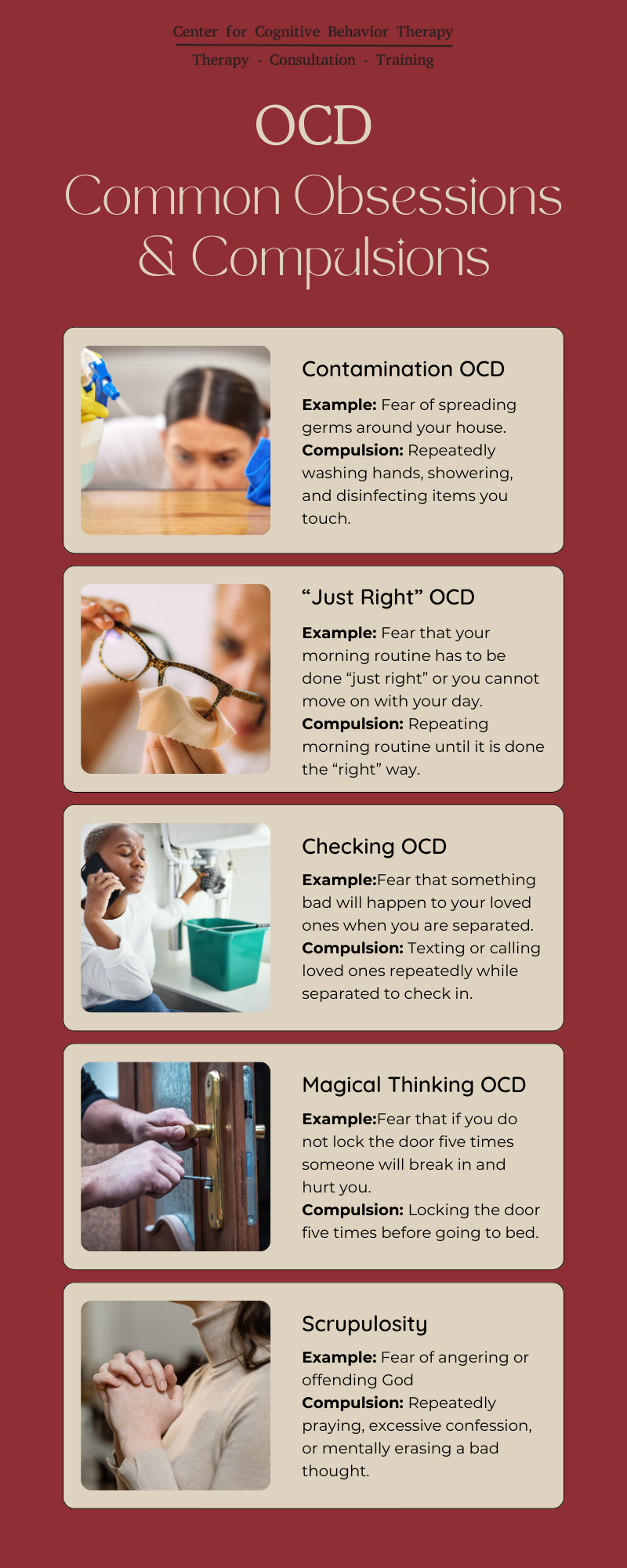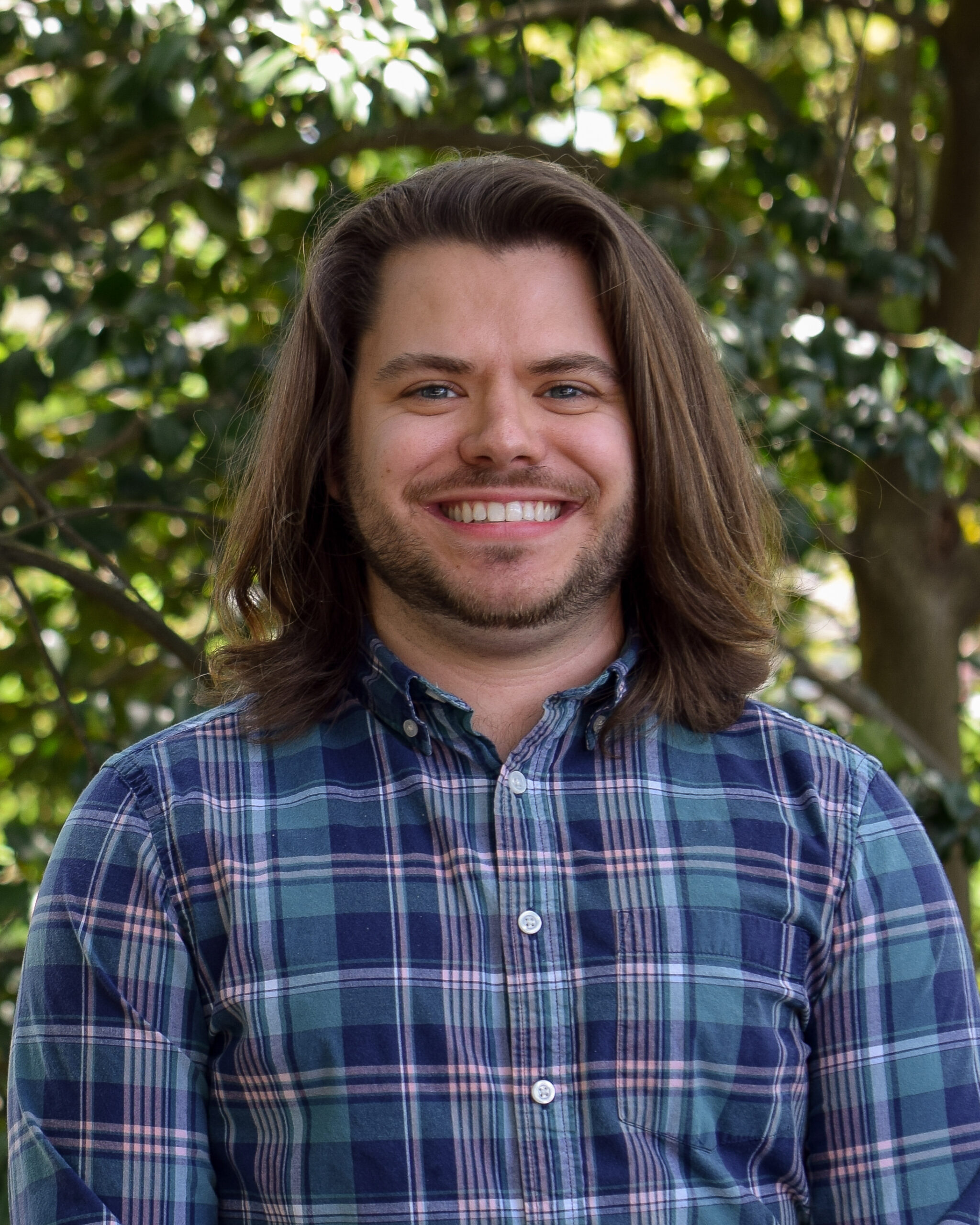It’s common to see OCD portrayed in television and movies as quirky personality traits, but what is OCD really?
OCD is a complex mental health disorder. It consists of intrusive thoughts, known as obsessions. Along with these obsessions are neutralizing behaviors, called compulsions. These behaviors can cause significant distress and harm to an individual’s day-to-day life.
What Are Obsessions & Compulsions?
Obsessions are recurrent intrusive thoughts, images or urges. They result in significant distress or anxiety. People have intrusive thoughts on many topics that come up in their everyday lives. For example, work, intimacy, morality, and harm to self or others. However, there is a clear distinction between an intrusive thought and an obsession.
Let’s think about it using the following example: an individual driving to work on a rainy day may experience the intrusive thought, “what if my car swerves and I run off the road?” This thought could be a common worry for people who do not like to drive in bad weather. However, once the individual makes it to their destination, they are able to go about their day without a second thought. An intrusive thought occurred, but the person moved on without impact. They did not keep thinking about what would happen if they had been in a car accident.
Now, let’s use the same example. Say the individual begins to have marked anxiety when the intrusive thought happens. This anxiety limits their ability to function. Now the intrusive thought is known as an obsession and has become debilitating. To neutralize this obsession, the individual does a physical or mental act known as a compulsion. The individual performs this compulsion to avoid a bad outcome.
In this example, the person obsesses about something bad happening when they drive in the rain. So, they pull the car over when it starts raining and avoid driving until the rain stops. Completing the compulsion stops the obsession, thus reinforcing the act. This person is able to experience short-term relief until the obsession returns. Now, each time they encounter rain while driving, they will feel compelled to pull over and wait for the rain to stop.
The cyclical nature of these thoughts and actions is known as obsessive-compulsive disorder (OCD). A person experiences an obsession, the obsession causes them anxiety, and the anxiety leads them to perform a compulsory act so that they feel temporary relief. The cycle then repeats when the person encounters the intrusive thought again.

Prevalence of OCD
Researchers believe that OCD is caused by a combination of factors, which may include genetics and the environment. The disorder affects roughly 1 in 100 children and 1 in 40 adults in the United States. OCD can develop at any age, with the average age of onset being 19.5 years old. OCD tends to affect males more in childhood, prior to the age of 10, while females tend to be diagnosed more in adolescence and adulthood. Individuals who have a family member with OCD are 25% more likely to develop the disorder. Also, 90% of adults with OCD have additional mental health conditions. These could be anxiety disorders, mood disorders, attention-deficit/hyperactivity disorder, or substance use disorders.
There are many subtypes of OCD, and it is not uncommon for an individual to experience symptoms that fall into multiple subtypes. Most people know some of the popular OCD subtypes. These include contamination OCD, “just right” OCD, and checking OCD. There are other, less common subtypes. Some examples include magical thinking OCD, moral scrupulosity OCD, and existential OCD.
It is important to be aware when obsessions and compulsions differ in theme in order to seek treatment with the appropriate therapy provider.
OCD Treatment
Cognitive behavior therapy (CBT) and exposure and response prevention (ERP), a sub-type of CBT considered the gold-standard for OCD treatment, are evidence-based treatment approaches for the management of OCD symptoms. Medication may also be helpful for managing the symptoms of OCD in combination with psychotherapy. Compulsions are time consuming and stress inducing, and it’s important to watch how long they take and how much they interfere with life. Treatment should be sought when obsessions hurt relationships, impede task focus, or when too much time is spent on compulsions (i.e. an hour or more per day).
It is important to note that OCD looks different for each individual.This article is not all encompassing, but offers an overview of what OCD is. A good care provider can review with you what treatment options are, what to expect from treatment, and how treatment can help. When seeking psychotherapy treatment for yourself or your child, know that OCD can be a difficult disorder to treat, and treatment can be time consuming. Be patient and remember that your therapist is there to help you meet success every step of the way.



